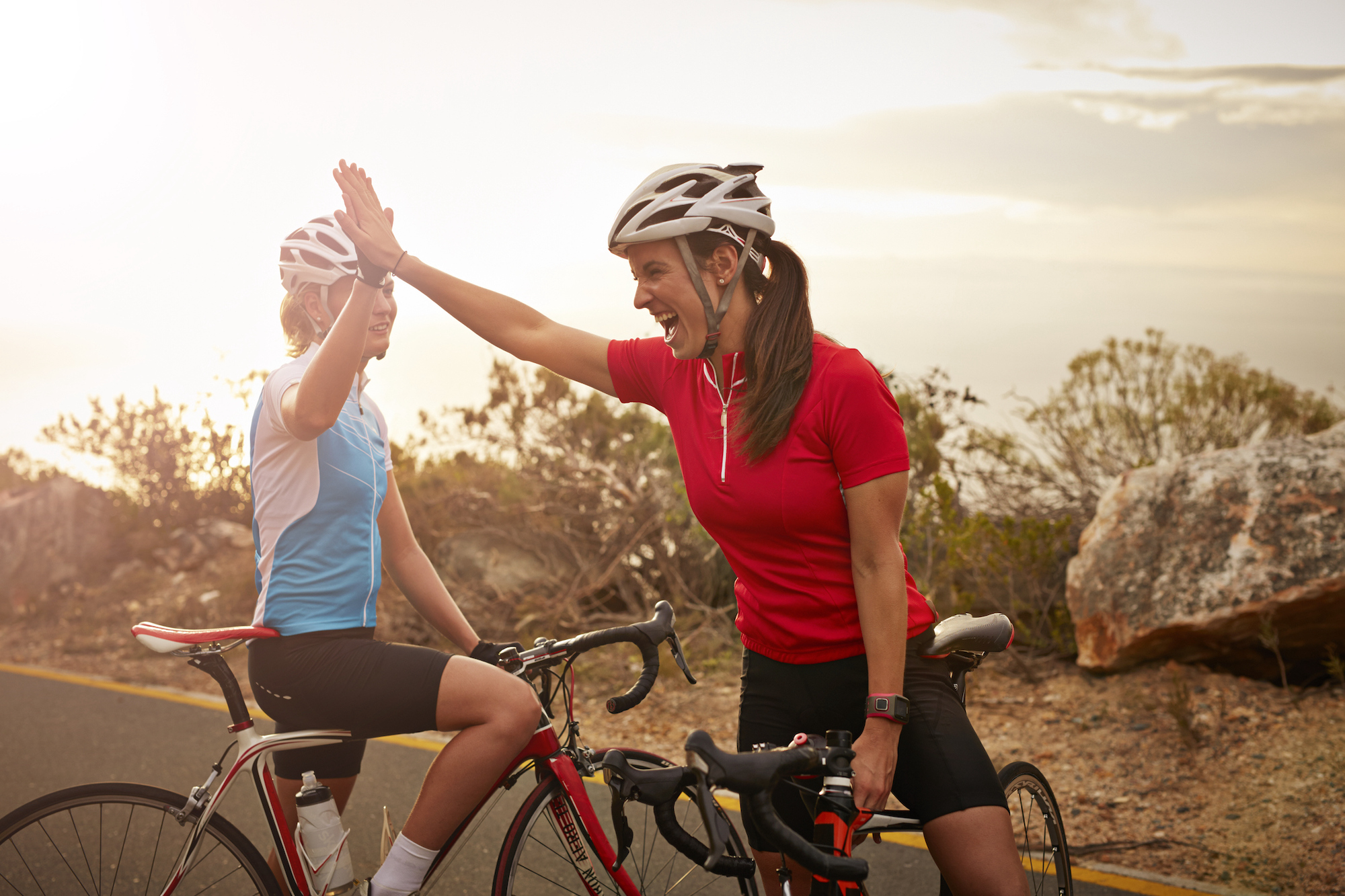A 'Cyclist’s High': What it is and how you get it
Contrary to popular belief, endorphins are not responsible for post-exercise bliss


The feelings of euphoria after a long ride are incredible to experience yet rare to achieve.
After hours of endurance exercise, you might be fortunate enough to feel the so-called “cyclist’s high”, which isn’t so different from the more commonly known runner’s high. Both sensations occur after periods of aerobic exercise, and they lead to relaxing, blissful mindsets. They make you feel like you could continue for miles and miles, and your pain seems to disappear.
The cyclist’s high is often described as a feeling of relief. When it occurs, it reduces anxiety, tension and pain. In scientific studies, researchers use the term “runner’s high” to encompass all types of aerobic exercise —not only running but also hiking and cycling.
Individuals describe this post-exercise high as sudden, relaxing and positive. It becomes easier for participants to feel happy instead of anxious, and this positive mood lasts for at least 30 minutes after exercise. Some research suggests that the euphoria from such a high can even become addicting.
But how does the 'high' happen? What is it? And how do you recreate it?
Many are quick to point to endorphins for being the cause of that post-exercise bliss, but recent studies show that endorphins cannot pass between the blood and brain barrier.
Dr. Sparling and colleagues at the University of Georgia conducted a double-blind study with 63 active individuals. Half of the participants received an opioid antagonist called naltrexone, which blocks endorphins from being released within the body. The other half received a placebo drug.
The latest race content, interviews, features, reviews and expert buying guides, direct to your inbox!
On two different dates, participants walked or ran on a treadmill. Researchers collected blood samples before and after the activity, and participants completed a questionnaire relating to their mood. At the end of the experiment, euphoria was found to be significantly higher after running than walking. Furthermore, the endorphin-blocking drug had no effect on the levels of euphoria.
This study shows that the exercise high does not rely on endorphins. However, researchers found increased levels of endocannabinoids in the participants’ blood samples after running.
Endocannabinoids are naturally occurring neurotransmitters or chemical messengers in the body that send signals between nerve cells. They occur throughout the body and play a part in several key body functions. "Endo" means within, indicating that the body produces these little communicators whereas "cannabinoids", a hemp plant derivative, come from external sources. Common cannabinoids include THC and CBD, which also interact with the receptors throughout your body. Your body's own endocannabinoids and hemp's cannabinoids cause similar feelings of euphoric calm.
To learn more, we reached out to Dr. Johannes Fuss, affiliated with endocannabinoid research through the Institute of Forensic Psychiatry and Sex Research at the University of Duisburg-Essen.
Dr. Fuss has conducted extensive research on how exercise impacts the endocannabinoid system.
“I more or less stumbled across this topic when I was doing a peer review. I suddenly realized that with a series of experiments it would be possible to find out whether endocannabinoids or endorphins are responsible for the runner's high,” he told Cycling Weekly.
To prove this theory, Dr. Fuss measured the endocannabinoids and pain sensations in mice after exercise. He conducted three experiments with 234 mice, showing that longer durations of wheel running produced increased endocannabinoid levels. Prolonged wheel running also led to more anti-anxiety behavior than acute running. Thus, in 2015, Dr. Fuss and his team claimed to be the first to demonstrate that a runner’s high depends on cannabinoid receptors. In mice at least.
Dr. Fuss continued to research the endocannabinoid system with human runners by asking participants to rate their euphorias on a visual analogue scale. When asked how cycling compares to running, Dr. Fuss responded, “I assume that the neurobiological basis of the cyclist’s high is the same as that of the runner’s high.”
For a cyclist perspective, researcher Elsa Heyman has made some findings on the relationship between cycling and the endocannabinoid system. In Heyman’s study, researchers used a standard protocol to measure the endocannabinoid levels of 11 male cyclists. The cyclists’ endocannabinoid levels did not significantly increase after 60 minutes of cycling at Zone 1, categorized as 55% of their maximal power output.
However, after 30 minutes of cycling at a moderate Zone 3 —75% of their maximal power—, the participants’ endocannabinoid levels noticeably increased, demonstrating that may be more likely to experience a cyclist’s high if we cycle at a moderate-to-challenging intensity, as opposed to an easy ride.
At the end of the day, it is your endocannabinoid system, not endorphins, that contributes to the cyclist’s high. According to Dr. Fuss, this brief moment of bliss affects everyone differently, and there are many unanswered questions. It remains unclear, for example, as to why some people experience a strong sensation and others do not experience anything at all.
But while the intensity of the cyclist’s high might vary for each person, it seems that going the distance is worth it. So if you've ever needed an excuse or motivation to rack up those miles, here it is. Get out, ride and feel good!
Get out, ride and feel good!

Katie Burke fell in love with cycling at an early age. Growing up, she biked on beautiful back roads and watched her parents train for triathlons. Outside of cycling, she loves swimming, hiking, running marathons, and drinking coffee. Her favorite week of the year is RAGBRAI: the 7-day, 450+ mile recreational ride across her home state of Iowa.